A sofa is often the centerpiece of a living room, but sometimes it may not be the perfect height for your needs. Whether you want to improve comfort, enhance accessibility, or complement a room’s aesthetic, making your sofa taller can be a simple and effective solution. Fortunately, there are several methods to achieve this without replacing your current furniture.
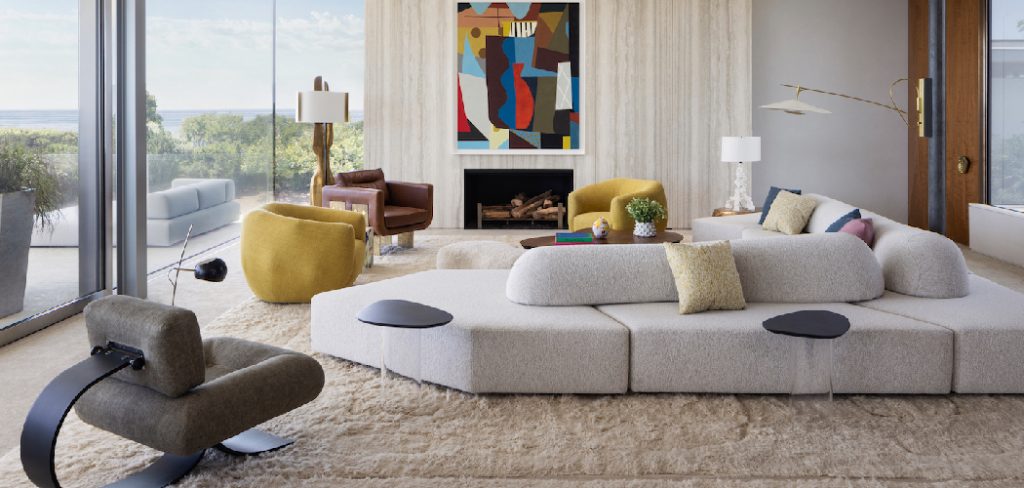
This guide on how to make sofa taller will explore practical ways to elevate your sofa, ensuring it meets both your functional and design preferences.
Why Make Your Sofa Taller?
Before delving into the methods, let’s first understand why you may want to make your sofa taller. Here are a few reasons to consider:
Improved Comfort:
If you have long legs or struggle with joint pain, a taller sofa may provide better support for your body when sitting. It can also make it easier to get up from the sofa without straining your knees or back.
Better Aesthetics:
Taller sofas tend to have a grander and more luxurious appearance, which can elevate the overall look of your living space. This is especially true if you have high ceilings or larger furniture pieces in the room.
Increased Storage Space:
By elevating your sofa, you create extra storage space underneath that can be used for baskets, bins, or even small furniture pieces like ottomans. This is a great way to maximize storage in smaller living spaces.
Needed Materials
Before you begin the process of elevating your sofa, it’s important to gather all the necessary materials. These may include:
Wood or Metal Blocks:
These will be used as the legs of your sofa and should be sturdy enough to support its weight. Make sure to measure the height of your sofa and purchase blocks that will elevate it to your desired height.
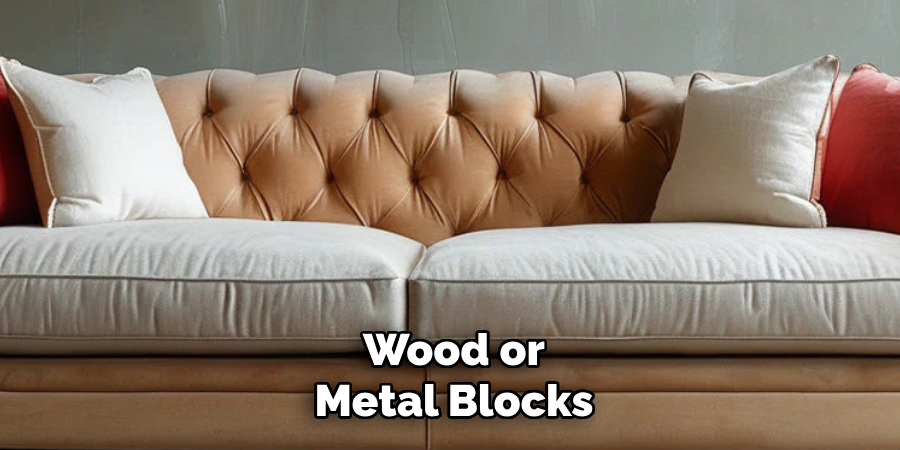
Power Drill:
You’ll need a power drill to create holes in the blocks for attaching them to your sofa’s frame.
Screws:
Choose screws that are long enough to securely fasten the blocks to your sofa’s frame. It’s always a good idea to have extra screws on hand, just in case.
Level:
This tool will help you ensure that your sofa is balanced and stable after being elevated.
9 Step-by-Step Instructions on How to Make Sofa Taller
Step 1: Measure and Mark
Start by measuring the height you want to add to your sofa. Use a measuring tape to determine the required elevation, ensuring it suits your comfort and the room’s layout.
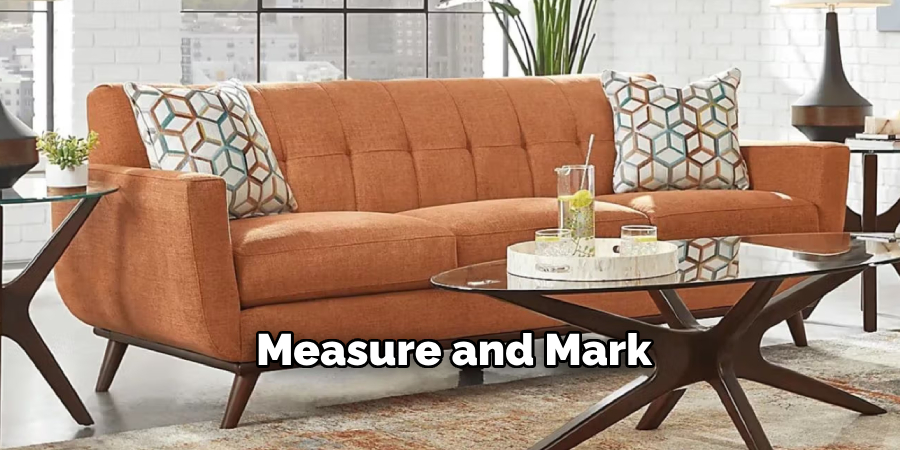
Once you’ve decided on the height, mark the spots on the sofa’s frame where the blocks will be attached. Make sure to space the marks evenly to provide proper balance and support for the sofa.
Step 2: Elevate the Sofa
Carefully lift the sofa with the help of another person to avoid injury. Position the sofa so that the prepared leg extensions or risers align with the marked spots you made earlier. Slowly lower the sofa onto the extensions, ensuring that each leg is securely placed on a block or riser.
Double-check the stability of the sofa by applying gentle pressure and testing for movement. Adjust as necessary to ensure the sofa is level and securely elevated.
Step 3: Secure Blocks
Once the sofa legs are properly positioned on the extensions or risers, secure the blocks to prevent any slipping or shifting. Depending on the type of blocks or risers used, this may involve tightening screws, applying adhesive pads, or utilizing rubber grips to enhance friction.
Verify that each block is firmly attached or stabilized. This step is crucial for ensuring the safety and durability of the elevated sofa. After securing the blocks, inspect them for any wobbling and make final adjustments if needed.
Step 4: Test Stability
Once the blocks or risers are secured, carefully test the stability of the elevated sofa. Begin by gently pressing down on different areas of the sofa to ensure it remains steady and does not shift or wobble. Gradually apply more pressure or sit on the sofa to simulate regular use.
If any instability is detected, double-check the alignment and attachment of the blocks or risers and make necessary adjustments. It is essential to ensure the setup is stable to prevent accidents or damage during use.
Step 5: Recheck Regularly
To ensure the elevated sofa remains safe and functional over time, make it a habit to inspect the setup regularly. Check for any signs of wear, such as cracks in the blocks or risers, loosened attachments, or shifting of the sofa.
Periodic inspections will help identify potential issues early, allowing for timely repairs or adjustments. By maintaining regular checks, you can prolong the stability and usability of the elevated sofa while ensuring safety for everyone using it.
Step 6: Maintain Proper Weight Limit
Adhering to the recommended weight limit for your elevated sofa is crucial for ensuring its safety and longevity. Overloading the sofa can put undue stress on the risers, blocks, or any supporting structure, increasing the risk of damage or collapse.
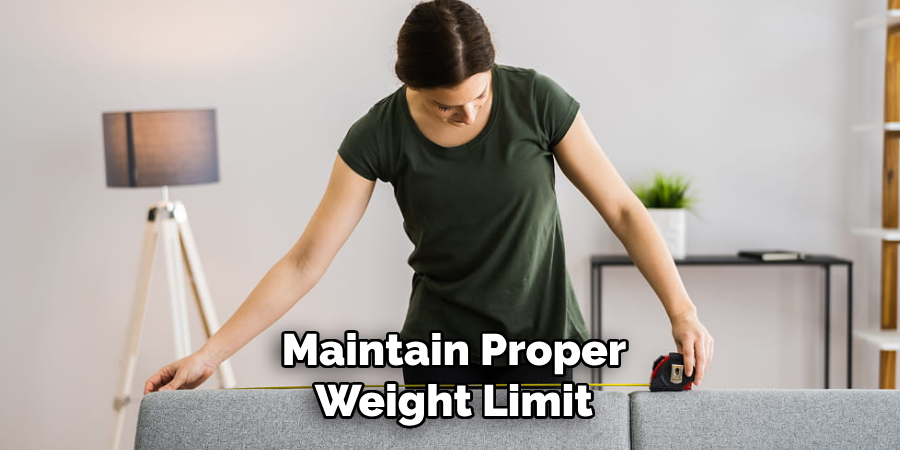
Be sure to check the weight capacity of both the sofa and the elevation materials, and distribute weight evenly when in use. By staying mindful of the proper weight limit, you can prevent accidents and keep your elevated sofa in optimal condition for years to come.
Step 7: Avoid Direct Sunlight
Prolonged exposure to direct sunlight can cause damage to your elevated sofa over time. Ultraviolet (UV) rays can fade upholstery fabric, weaken materials, and lead to premature wear and tear. To prevent this, consider placing the sofa in a shaded area or using UV-blocking window treatments to shield it from sunlight.
Additionally, rotating cushions and furniture periodically can help ensure even wear and preserve the sofa’s appearance and durability. Protecting your furniture from sunlight is a simple yet effective way to extend its lifespan.
Step 8: Attend to Spills Immediately
Accidents happen, and when they do, it’s crucial to address spills on your sofa promptly to prevent stains from setting. Use a clean, absorbent cloth or paper towel to blot the liquid gently—avoid rubbing, as this can push the spill deeper into the fabric.
For stubborn stains, consult the care label on your sofa to determine the appropriate cleaning method. Whether you use water-based solutions or professional upholstery cleaners, quick action is key to maintaining your sofa’s pristine condition and extending its lifespan.
Step 9: Avoid Direct Sunlight
Excessive exposure to sunlight can cause your sofa’s fabric to fade and deteriorate over time. If possible, avoid placing your sofa in direct sunlight or use curtains or blinds to block out strong sunlight. This will help preserve the color and quality of your sofa’s fabric.
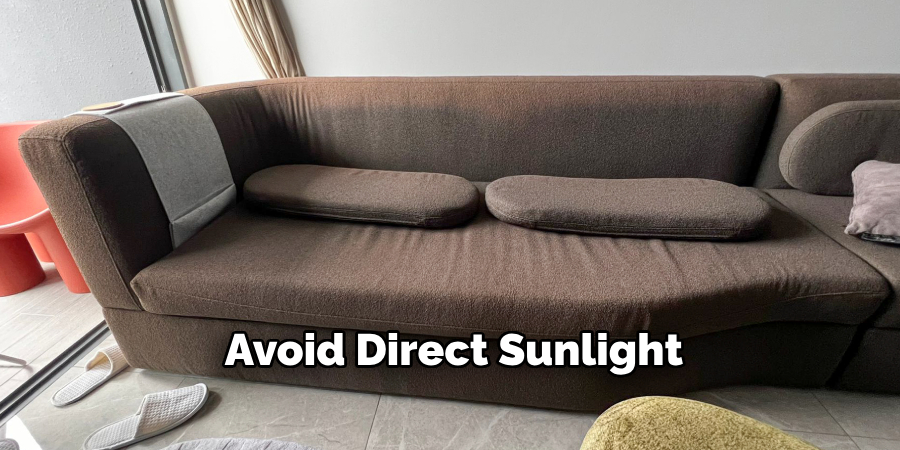
Following these simple steps on how to make sofa taller can go a long way in keeping your sofa in top condition. By taking proper care of your sofa from the start, you can save yourself from costly repairs or replacements down the line. Remember to address spills and stains immediately, use appropriate cleaning methods, and avoid direct sunlight to maintain the beauty and integrity of your sofa for years to come. Happy lounging!
Additional Tips
- If your sofa has legs instead of a solid base, you can still use this method by attaching blocks or furniture risers to each leg for added support and stability.
- Regularly rotate your sofa cushions to evenly distribute wear and tear.
- Use a lint roller or brush to remove any pet hair or debris from your sofa’s fabric.
- If you have a spill on your sofa, blot it immediately with a clean cloth before it has a chance to set in. Avoid rubbing the stain as this can make it worse.
- Consider investing in armrest covers or slipcovers for added protection and easy cleaning.
- Follow the manufacturer’s instructions for cleaning and maintenance, as different fabrics may require specific care methods.
By following these simple tips, you can keep your sofa looking new and extend its lifespan for years to come.
Frequently Asked Questions
Q1: Can I Use Any Type of Cleaning Product on My Sofa?
A: It is important to check the manufacturer’s instructions before using any cleaning products on your sofa. Some fabrics may be sensitive to certain chemicals and could be damaged by harsh cleaners. Always opt for gentle, non-toxic cleaners if possible.
Q2: How Often Should I Clean My Sofa?
A: It is recommended to clean your sofa at least once a week. However, this may vary depending on usage and the type of fabric. For heavily used sofas or those with light-colored fabrics, more frequent cleaning may be necessary.
Q3: Can I Steam Clean My Sofa?
A: While steam cleaners can be effective for removing stains and bacteria from upholstery, it is important to check the manufacturer’s instructions before using one on your sofa. Some fabrics may not be suitable for steam cleaning and could incur damage. Always spot test in an inconspicuous area before using a steam cleaner on your sofa.
Conclusion
Always consult the manufacturer’s guidelines for the best care practices, and remember that a well-maintained sofa not only enhances your living space but also extends the life of your investment. Thanks for reading this article on how to make sofa taller. Modern teak wood sofa set designs combine timeless elegance with durability, making them a perfect choice for both traditional and contemporary living spaces.
About the Author
Adrian Green, a lifelong woodworking enthusiast, shares his passion for the craft through The Woodenify Blog. With a foundation built on years of hands-on experience in his father’s woodworking shop, Adrian is dedicated to helping others learn and grow in the world of DIY woodworking. His approach to woodworking combines creativity, practicality, and a deep appreciation for the art of building with your own hands. Through his blog, he inspires individuals of all skill levels to embark on their own woodworking journeys, creating beautiful, functional pieces of furniture and décor.
Professional Focus
- Specializes in DIY woodworking projects, from furniture to home décor.
- Provides step-by-step guides and practical tutorials for woodworkers of all skill levels.
- Dedicated to helping readers build confidence and skill through easy-to-follow instructions and tips.
- Passionate about fostering a community of makers who can share, learn, and grow together.
Education History
- University of Craft and Design – Bachelor of Fine Arts (BFA) in Woodworking and Furniture Design
- Woodworking Apprenticeships – Extensive hands-on training with skilled craftsmen to refine carpentry and furniture making techniques.
- Online Courses & Masterclasses – Continued education in advanced woodworking techniques, design principles, and specialized tools
Expertise:
- DIY woodworking, carpentry, furniture making, and home décor projects.
- Creating accessible tutorials and guides for beginner to advanced woodworkers.
- Sharing the joys and satisfaction of woodworking, from raw materials to finished products.
